Today in Naval History - Naval / Maritime Events in History
21st of November
some of the events you will find here,
please use the following link where you will find more details and all other events of this day .....
1742 - sloop HMS Drake (1741 - 14) and several other ships like two fine Xebecs belonging to the King, three ships with stores for the garrison and a large Settee storeship, besides several Portuguese vessels lost in a violent storm in Gibraltar Bay
HMS Drake was an 8-gun snow-rigged sloop of the Royal Navy, launched in 1741 as the first of three Drake class sloops constructed for convoy duty during the Anglo-Spanish War of Jenkins' Ear from 1739 to 1742. After limited service off the Channel Islands, she was sailed to Gibraltar where she was wrecked in 1742 while under the temporary command of her first lieutenant.

1779 - HMS Hussar (1763 - 28), Cptn. Elliott Salter, took Nostra Senora del Buen Confegio (26).
HMS Hussar was a sixth-rate frigate of the Royal Navy, built in England in 1761-63. She was a 28-gun ship of the Mermaid class, designed by Sir Thomas Slade. She was wrecked at New York in 1780.
In early 2013, a cannon from Hussar was discovered stored in a building in New York's Central Park still loaded with live gunpowder and shot

1808 - HMS Dedaigneuse (1797 - 36), Cptn. William Beauchamp Proctor, engaged French frigate Semillante (1791 - 32) off Mauritius.
The Dédaigneuse was a 40-gun Coquille-class frigate of the French Navy, launched in 1797. The Royal Navy captured her in 1801 and took her into service as HMS Dedaigneuse. She was hulked as a receiving ship in 1812 and sold in 1823.

1839 – Launch of French Inflexible, a 90-gun Suffren-class Ship of the line of the French Navy
The Inflexible was a 90-gun Suffren-class Ship of the line of the French Navy.
Commissioned in Rochefort in 1840, Inflexible was appointed to the Mediterranean squadron, where she served from 1841 under Captain Guérin des Essarts.
From 1860, she was used as a boys' school in Brest, and was eventually broken up in 1875

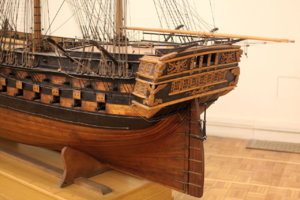
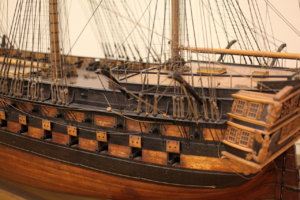
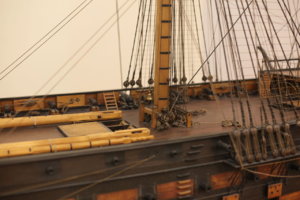

1910 – Sailors on board Brazil's warships including the Minas Geraes, São Paulo, and Bahia, violently rebel in what is now known as the Revolta da Chibata (Revolt of the Lash).

1912 – Launch of Japanese battleship Hiei, a Kongo-class battleship
Hiei (比叡) was a warship of the Imperial Japanese Navy during World War I and World War II. Designed by British naval architect George Thurston, she was the second launched of four Kongō-class battlecruisers, among the most heavily armed ships in any navy when built. Laid down in 1911 at the Yokosuka Naval Arsenal, Hiei was formally commissioned in 1914. She patrolled off the Chinese coast on several occasions during World War I, and helped with rescue efforts following the 1923 Great Kantō earthquake.

1916 – Mines from SM U-73 sink the HMHS Britannic, the largest ship lost in the First World War.
HMHS Britannic (/brɪˈtænɪk/) was the third and final vessel of the White Star Line's Olympic class of steamships and the second to bear the name "Britannic." She was the fleet mate of both the RMS Olympic and the RMS Titanic and was intended to enter service as a transatlantic passenger liner.
Britannic was launched just before the start of the First World War. She was designed to be the safest and most luxurious of the three ships, drawing lessons from the sinking of the Titanic. She was laid up at her builders, Harland and Wolff, in Belfast for many months before being put to use as a hospital ship in 1915. In 1915 and 1916 she served between the United Kingdom and the Dardanelles. On the morning of 21 November 1916 she was shaken by an explosion caused by a naval mine near the Greek island of Kea and foundered 55 minutes later, killing 30 people.

1944 – World War II: American submarine USS Sealion (SS 315) sinks the Japanese battleship Kongō and Japanese destroyer Urakaze in the Formosa Strait.

21st of November
some of the events you will find here,
please use the following link where you will find more details and all other events of this day .....
Naval/Maritime History - 19th of April - Today in Naval History - Naval / Maritime Events in History
Today in Naval History - Naval / Maritime Events in History 20 November 1845 – Anglo-French blockade of the Río de la Plata: Battle of Vuelta de Obligado. The naval Battle of Vuelta de Obligado took place on the waters of the Paraná River on 20 November 1845, between the Argentine...
shipsofscale.com
1742 - sloop HMS Drake (1741 - 14) and several other ships like two fine Xebecs belonging to the King, three ships with stores for the garrison and a large Settee storeship, besides several Portuguese vessels lost in a violent storm in Gibraltar Bay
HMS Drake was an 8-gun snow-rigged sloop of the Royal Navy, launched in 1741 as the first of three Drake class sloops constructed for convoy duty during the Anglo-Spanish War of Jenkins' Ear from 1739 to 1742. After limited service off the Channel Islands, she was sailed to Gibraltar where she was wrecked in 1742 while under the temporary command of her first lieutenant.
1779 - HMS Hussar (1763 - 28), Cptn. Elliott Salter, took Nostra Senora del Buen Confegio (26).
HMS Hussar was a sixth-rate frigate of the Royal Navy, built in England in 1761-63. She was a 28-gun ship of the Mermaid class, designed by Sir Thomas Slade. She was wrecked at New York in 1780.
In early 2013, a cannon from Hussar was discovered stored in a building in New York's Central Park still loaded with live gunpowder and shot
1808 - HMS Dedaigneuse (1797 - 36), Cptn. William Beauchamp Proctor, engaged French frigate Semillante (1791 - 32) off Mauritius.
The Dédaigneuse was a 40-gun Coquille-class frigate of the French Navy, launched in 1797. The Royal Navy captured her in 1801 and took her into service as HMS Dedaigneuse. She was hulked as a receiving ship in 1812 and sold in 1823.
1839 – Launch of French Inflexible, a 90-gun Suffren-class Ship of the line of the French Navy
The Inflexible was a 90-gun Suffren-class Ship of the line of the French Navy.
Commissioned in Rochefort in 1840, Inflexible was appointed to the Mediterranean squadron, where she served from 1841 under Captain Guérin des Essarts.
From 1860, she was used as a boys' school in Brest, and was eventually broken up in 1875



1910 – Sailors on board Brazil's warships including the Minas Geraes, São Paulo, and Bahia, violently rebel in what is now known as the Revolta da Chibata (Revolt of the Lash).
1912 – Launch of Japanese battleship Hiei, a Kongo-class battleship
Hiei (比叡) was a warship of the Imperial Japanese Navy during World War I and World War II. Designed by British naval architect George Thurston, she was the second launched of four Kongō-class battlecruisers, among the most heavily armed ships in any navy when built. Laid down in 1911 at the Yokosuka Naval Arsenal, Hiei was formally commissioned in 1914. She patrolled off the Chinese coast on several occasions during World War I, and helped with rescue efforts following the 1923 Great Kantō earthquake.
1916 – Mines from SM U-73 sink the HMHS Britannic, the largest ship lost in the First World War.
HMHS Britannic (/brɪˈtænɪk/) was the third and final vessel of the White Star Line's Olympic class of steamships and the second to bear the name "Britannic." She was the fleet mate of both the RMS Olympic and the RMS Titanic and was intended to enter service as a transatlantic passenger liner.
Britannic was launched just before the start of the First World War. She was designed to be the safest and most luxurious of the three ships, drawing lessons from the sinking of the Titanic. She was laid up at her builders, Harland and Wolff, in Belfast for many months before being put to use as a hospital ship in 1915. In 1915 and 1916 she served between the United Kingdom and the Dardanelles. On the morning of 21 November 1916 she was shaken by an explosion caused by a naval mine near the Greek island of Kea and foundered 55 minutes later, killing 30 people.
1944 – World War II: American submarine USS Sealion (SS 315) sinks the Japanese battleship Kongō and Japanese destroyer Urakaze in the Formosa Strait.


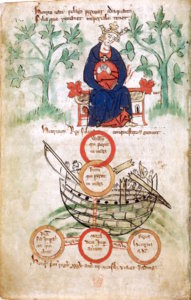
 bulletins of casualties and damage were sold all over England – a novelty at that time. The
bulletins of casualties and damage were sold all over England – a novelty at that time. The 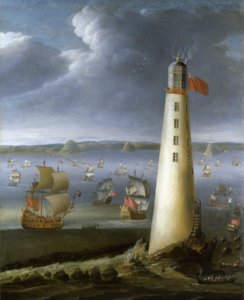
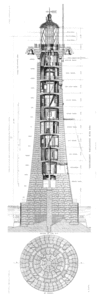
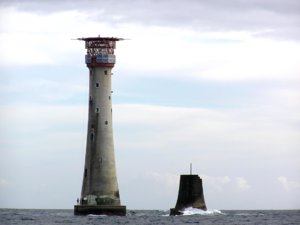
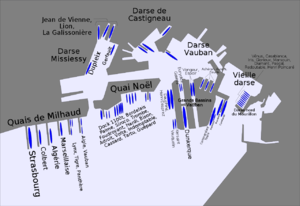
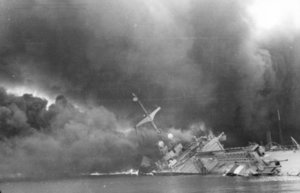
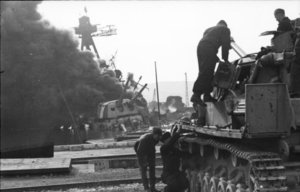

 was a maritime disaster in Halifax, Nova Scotia. The Norwegian vessel SS Imo collided with SS Mont-Blanc, a French cargo ship laden with high explosives. A fire on board the French ship ignited her cargo, causing a large explosion that devastated the Richmond district of Halifax. Approximately 2,000 people were killed.
was a maritime disaster in Halifax, Nova Scotia. The Norwegian vessel SS Imo collided with SS Mont-Blanc, a French cargo ship laden with high explosives. A fire on board the French ship ignited her cargo, causing a large explosion that devastated the Richmond district of Halifax. Approximately 2,000 people were killed.